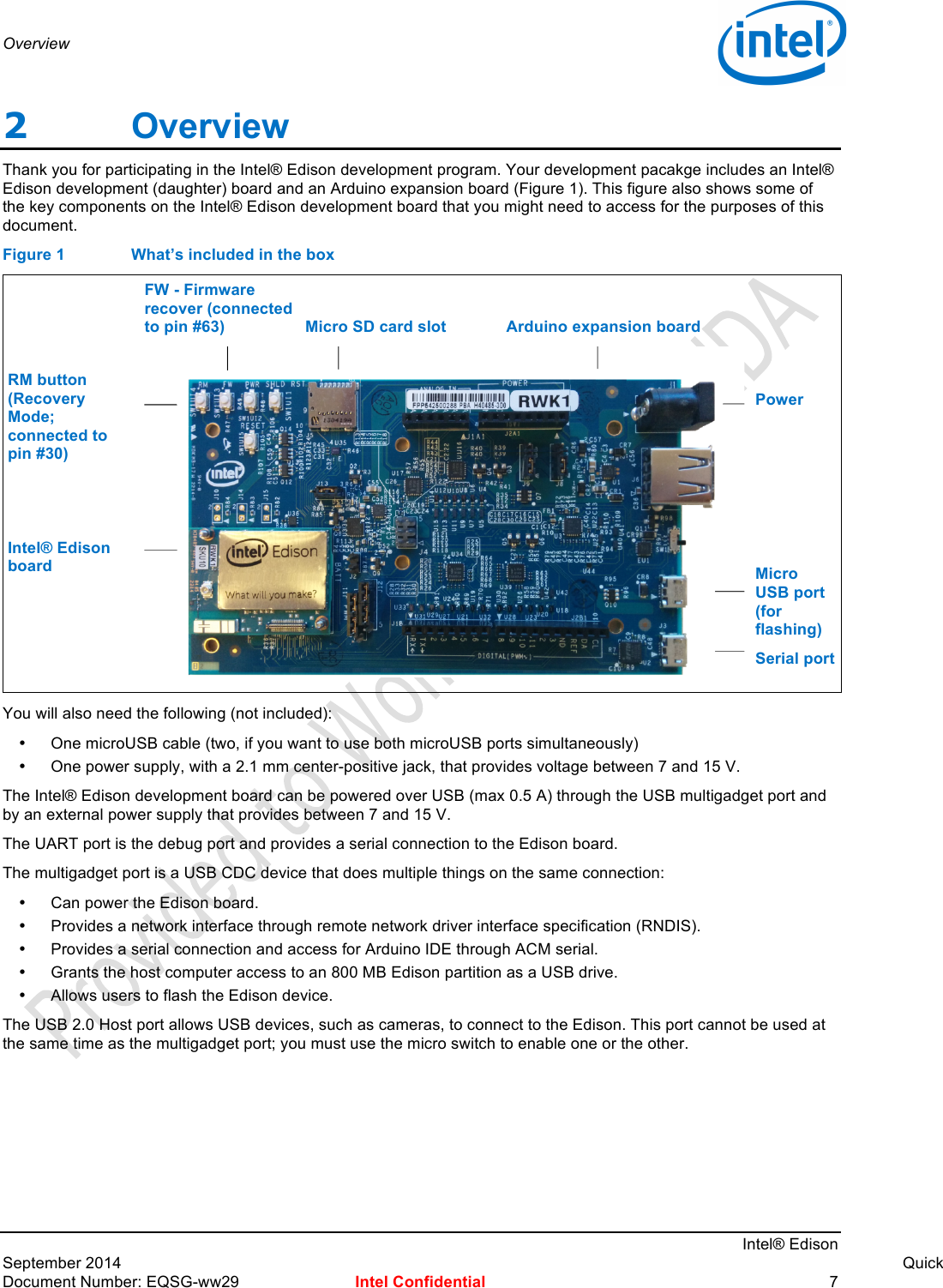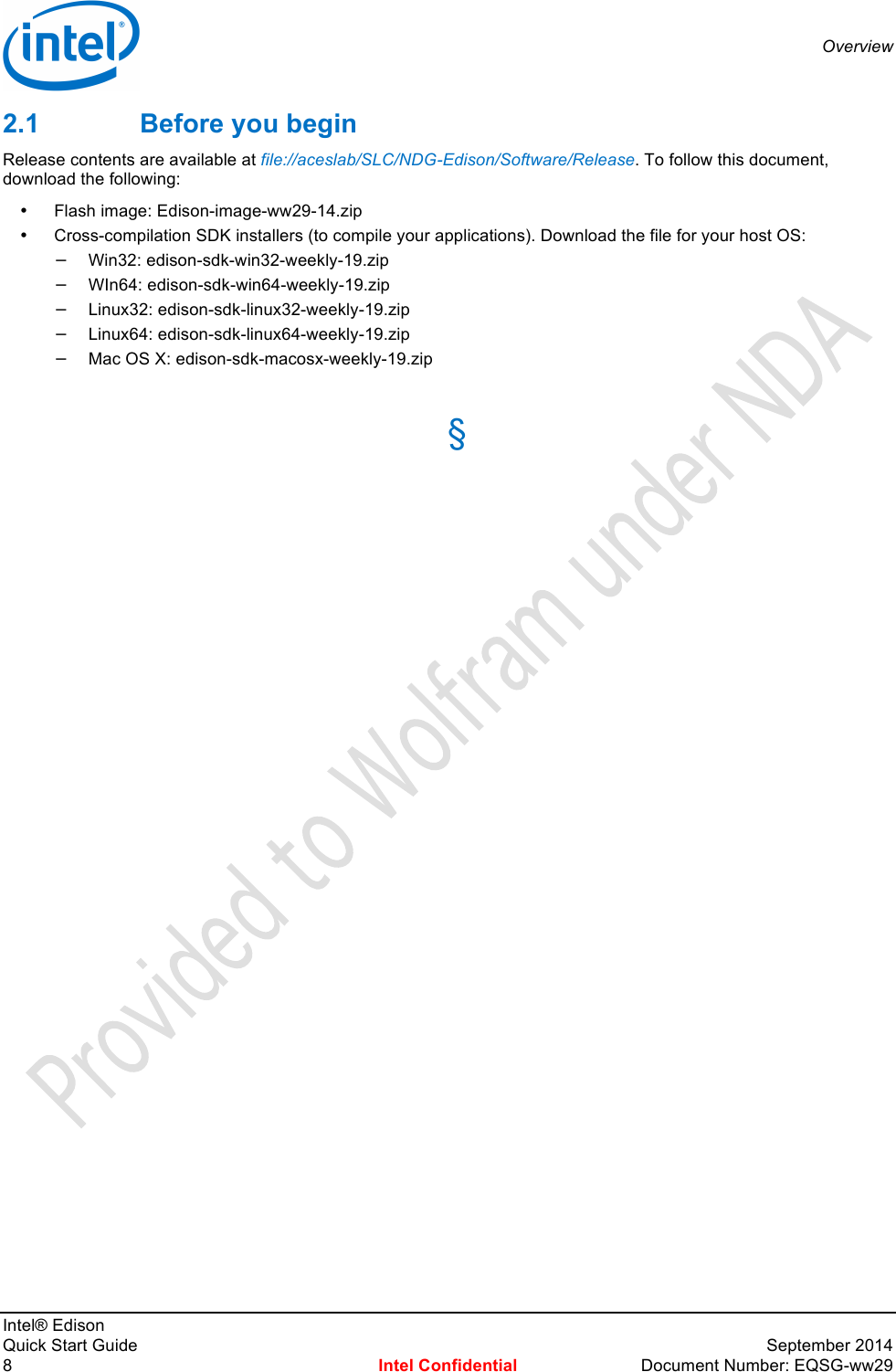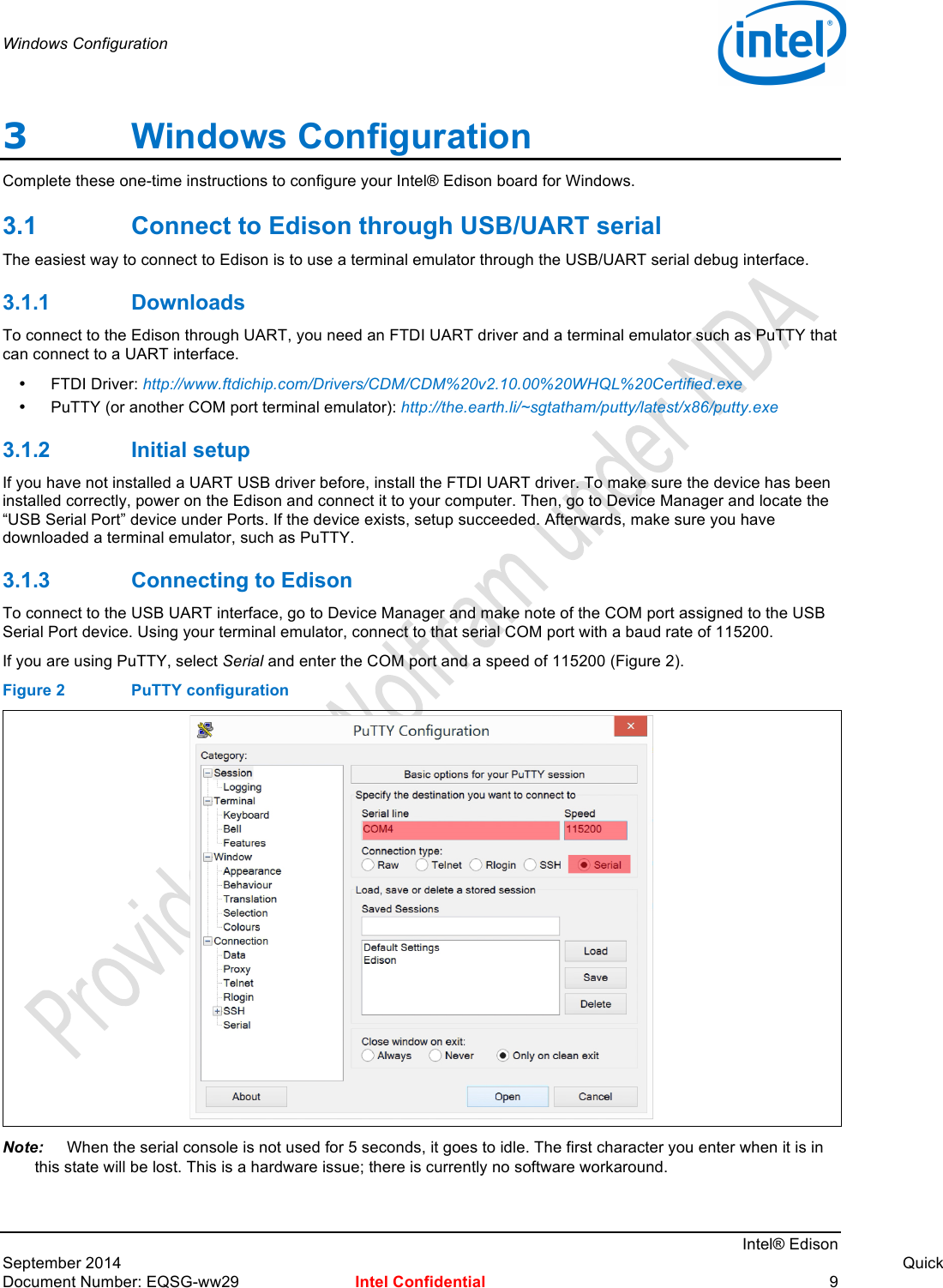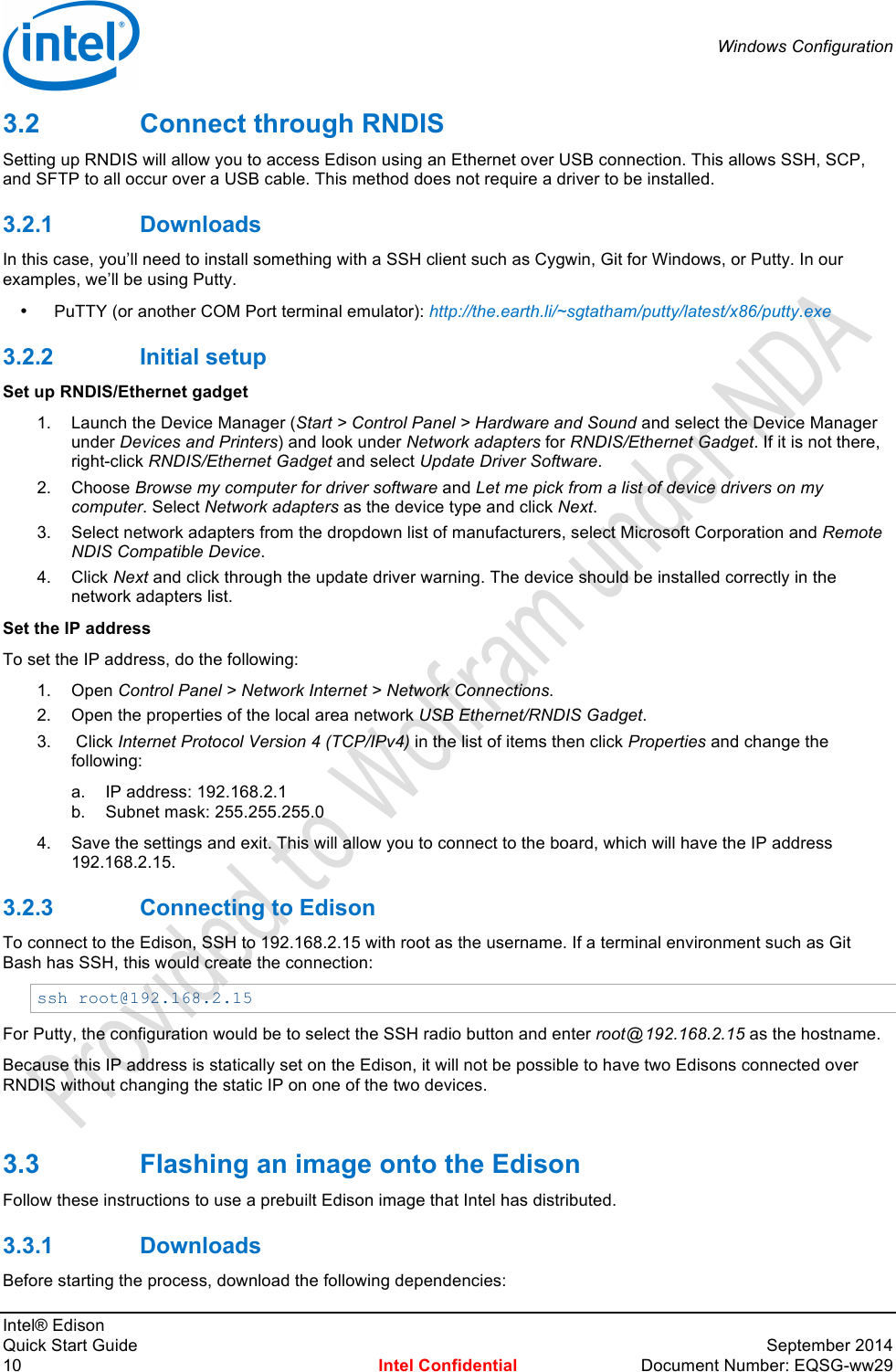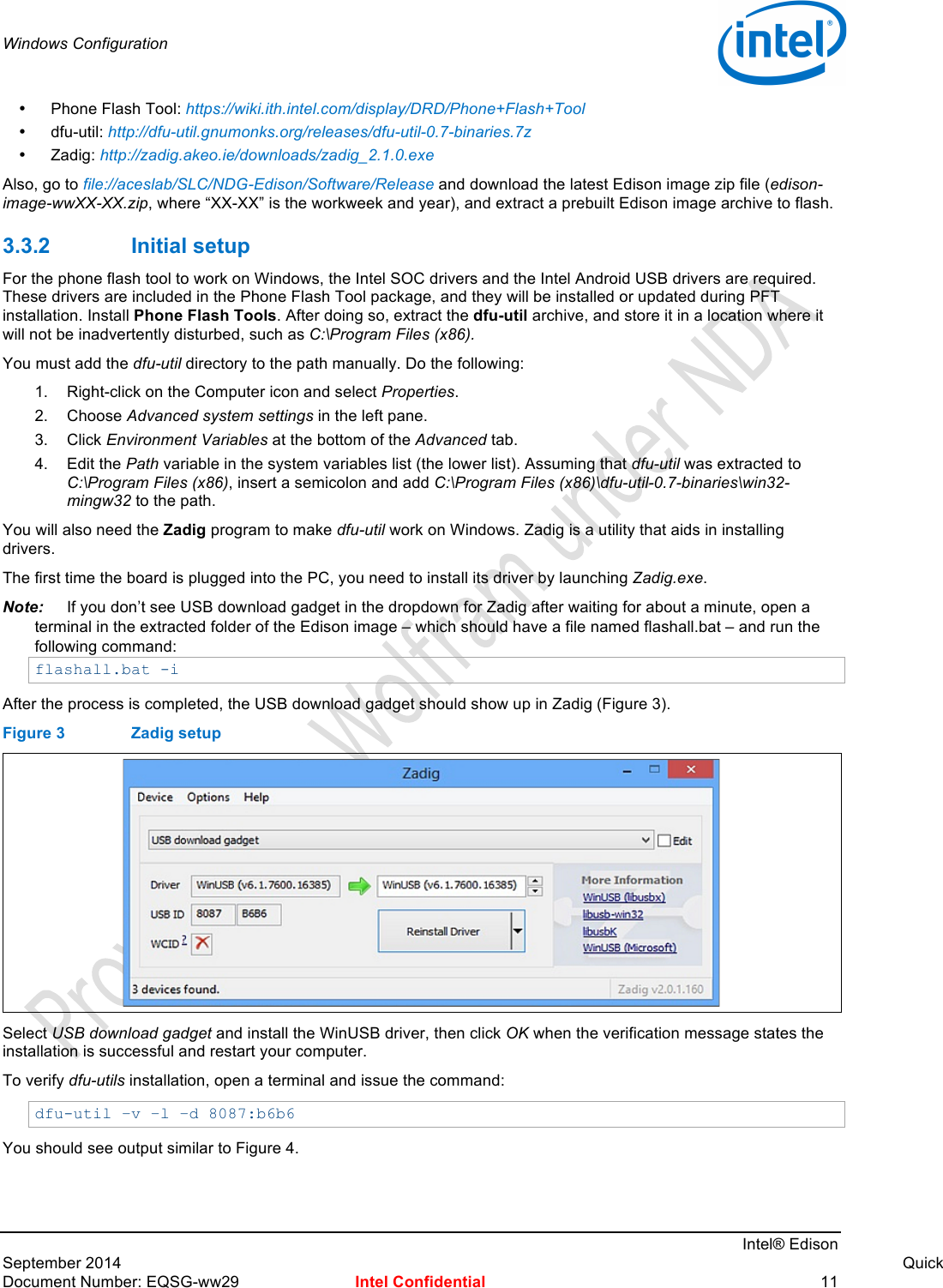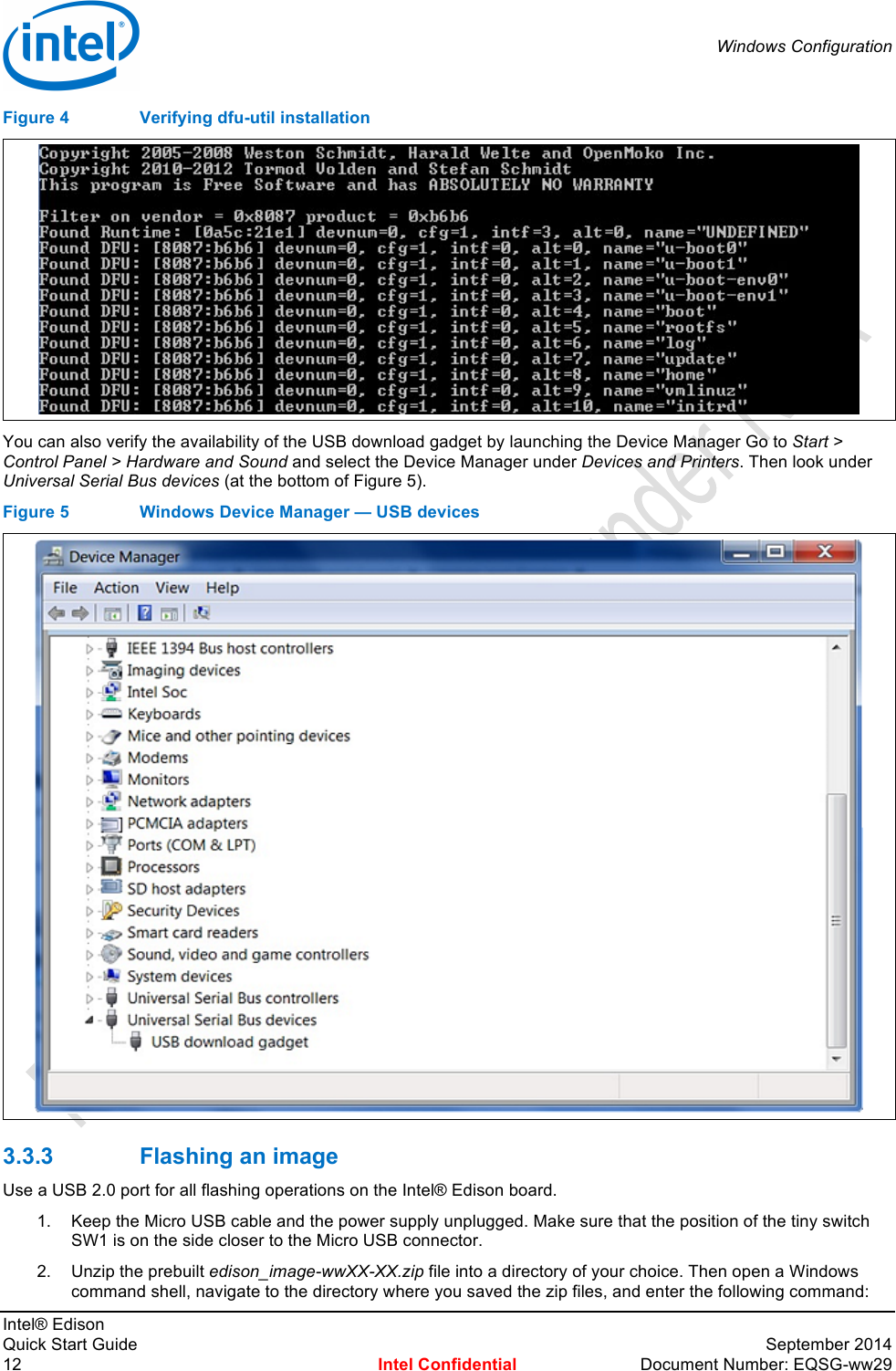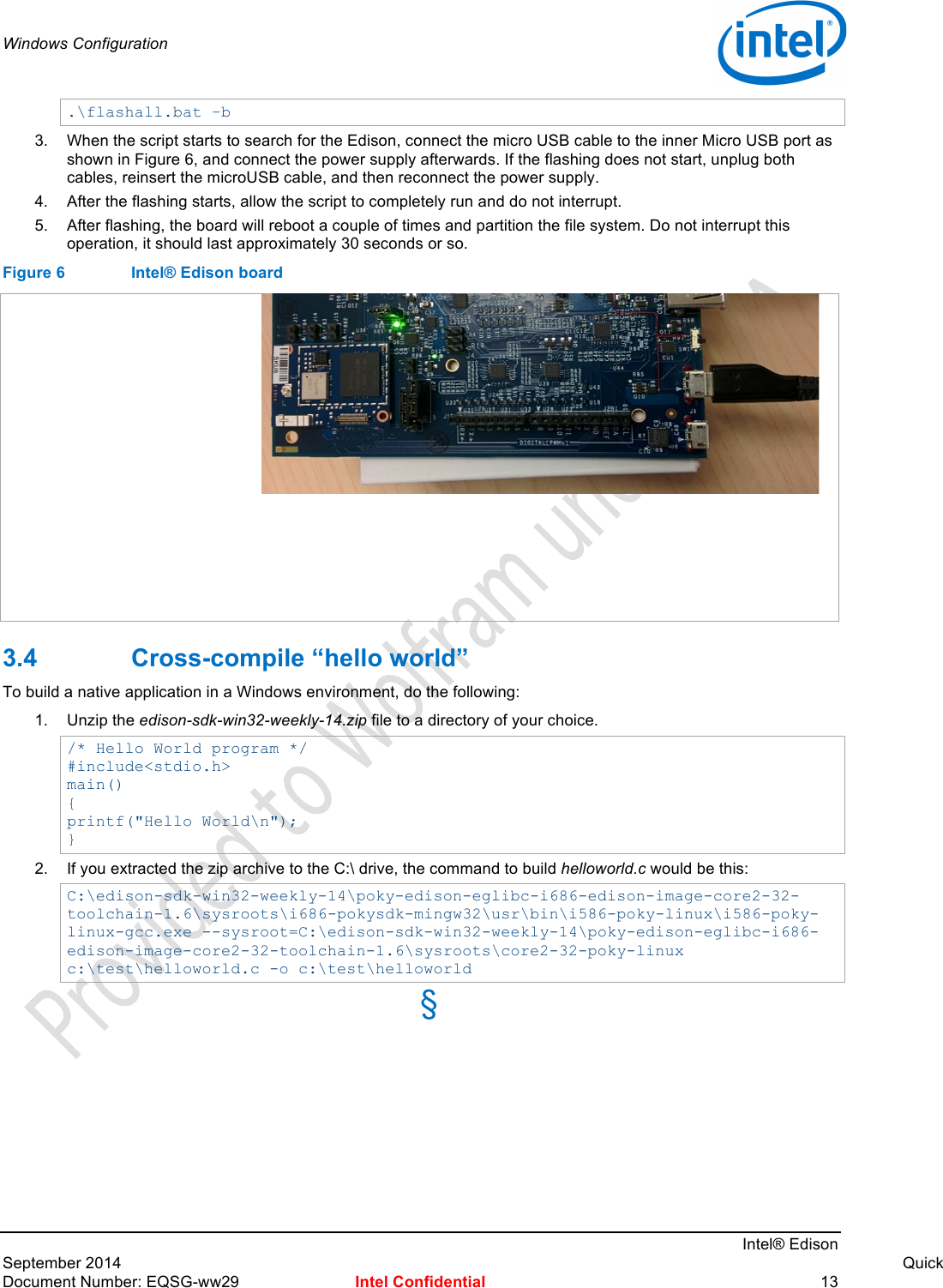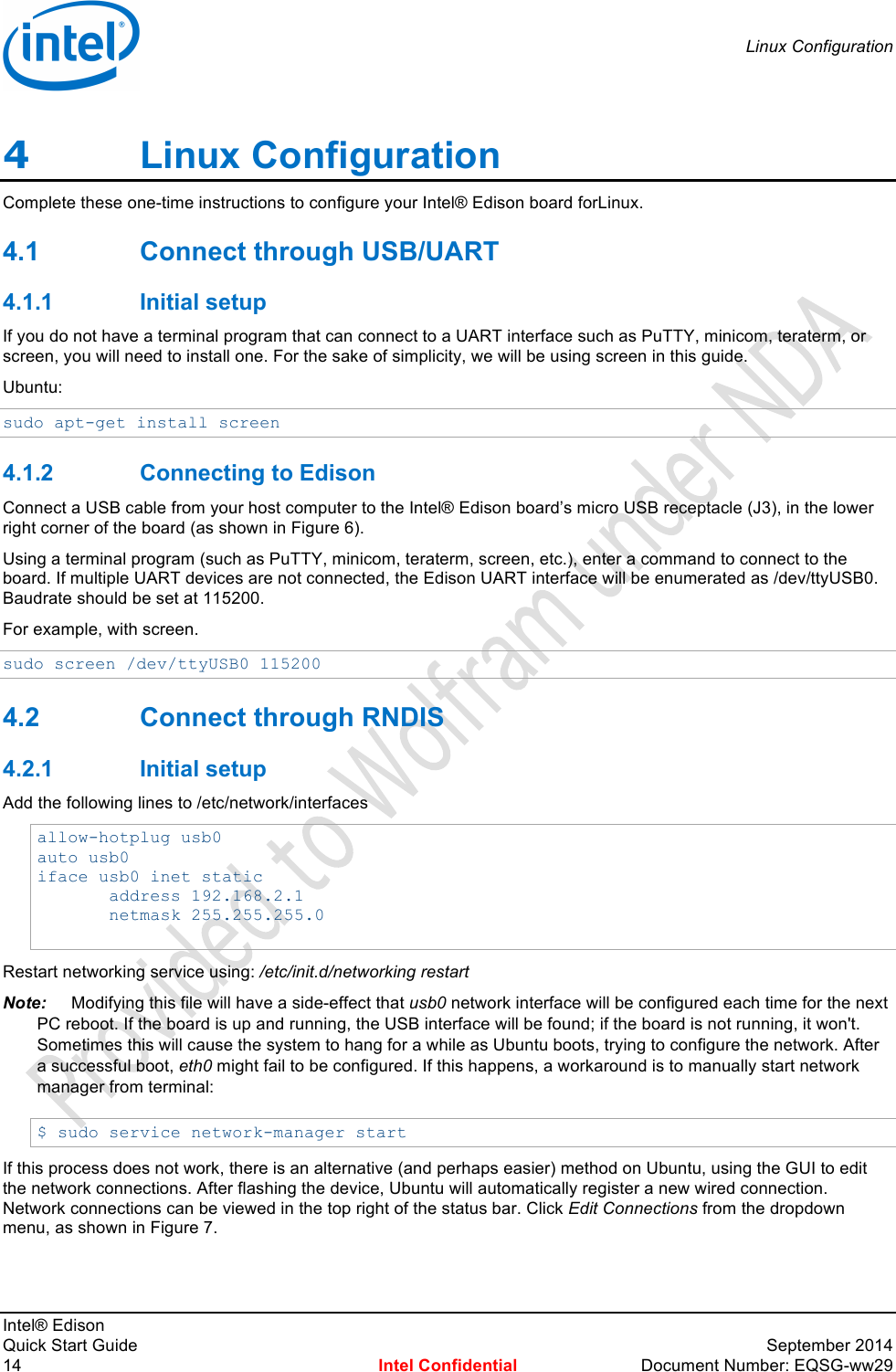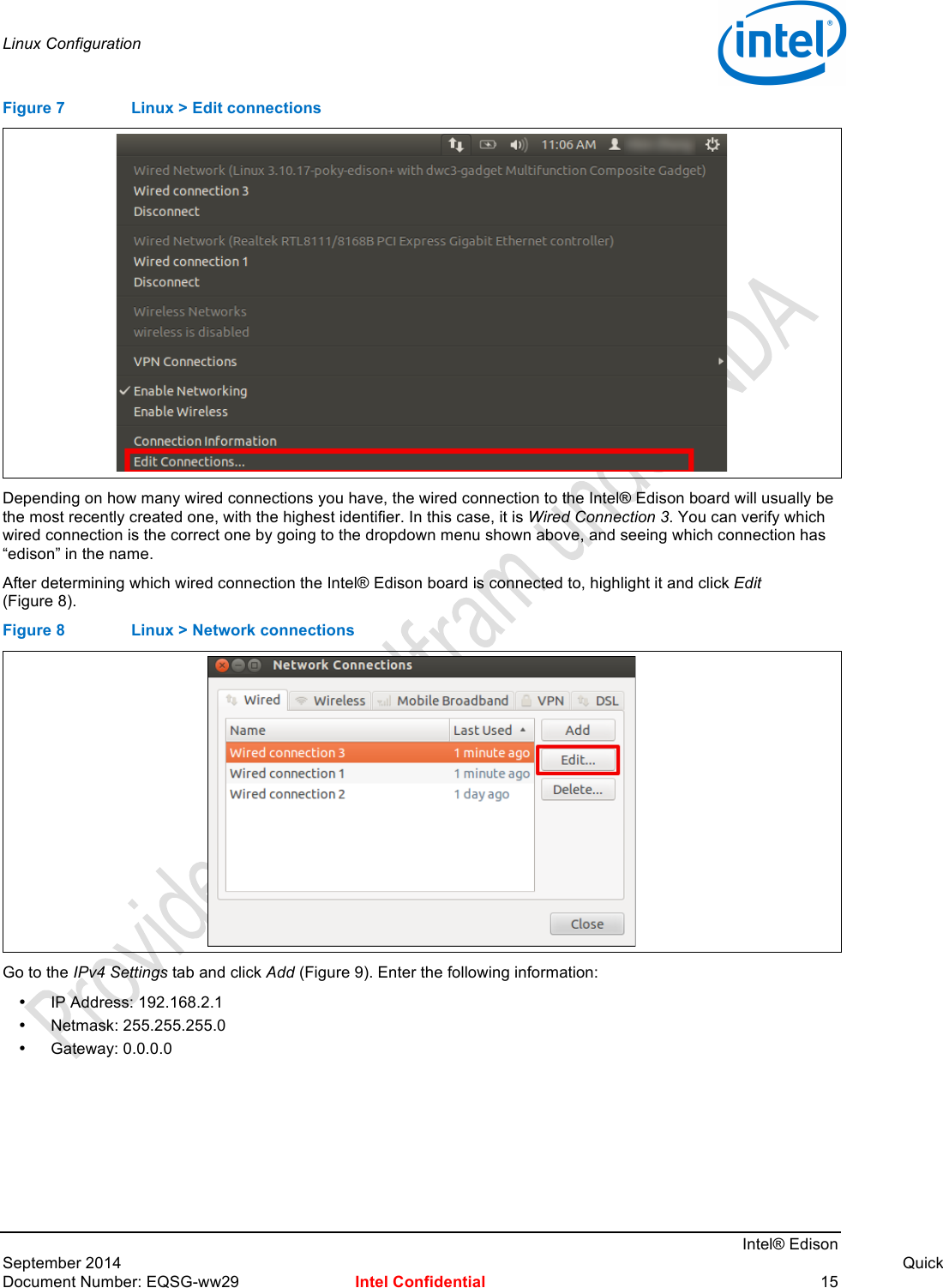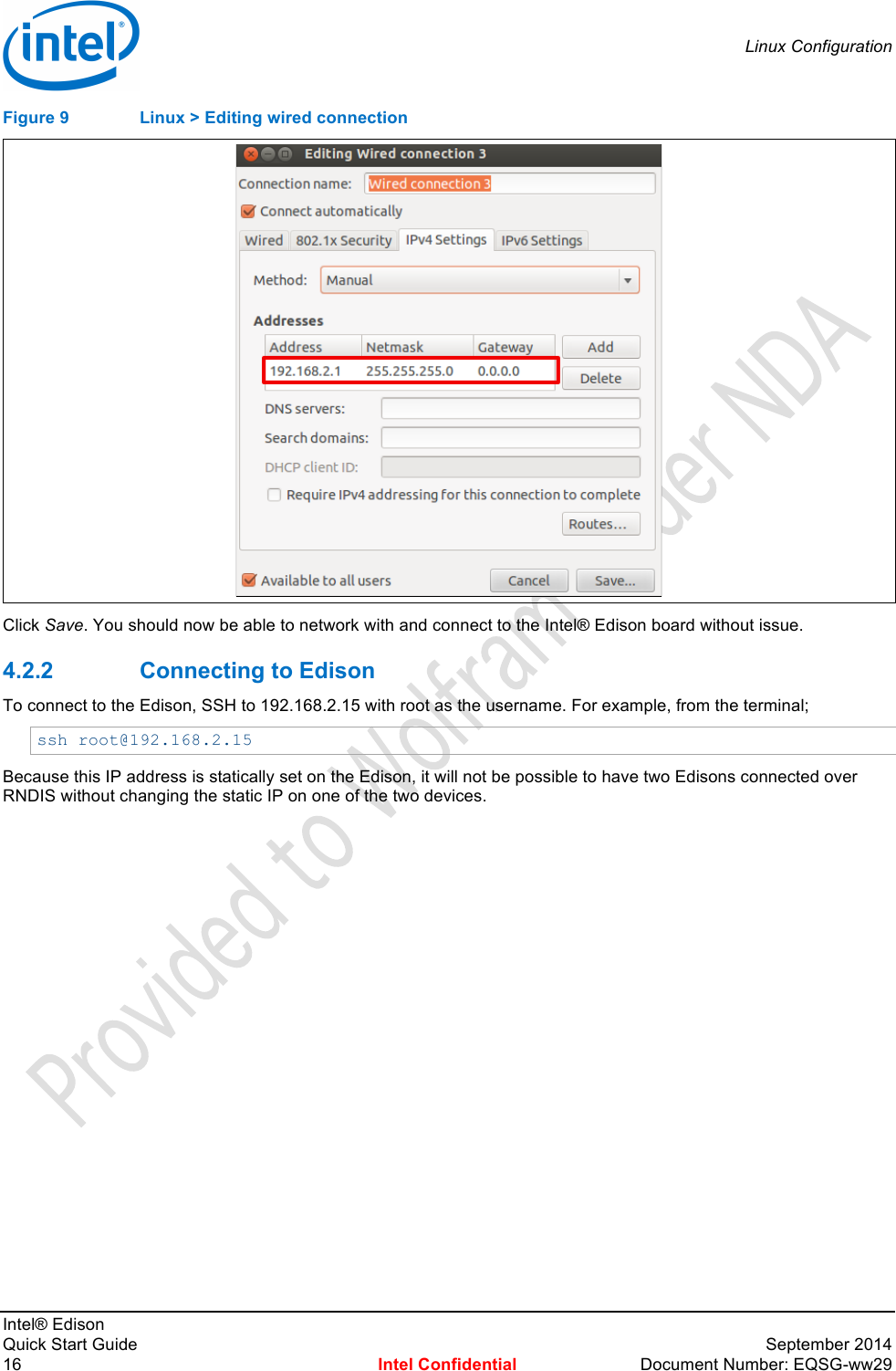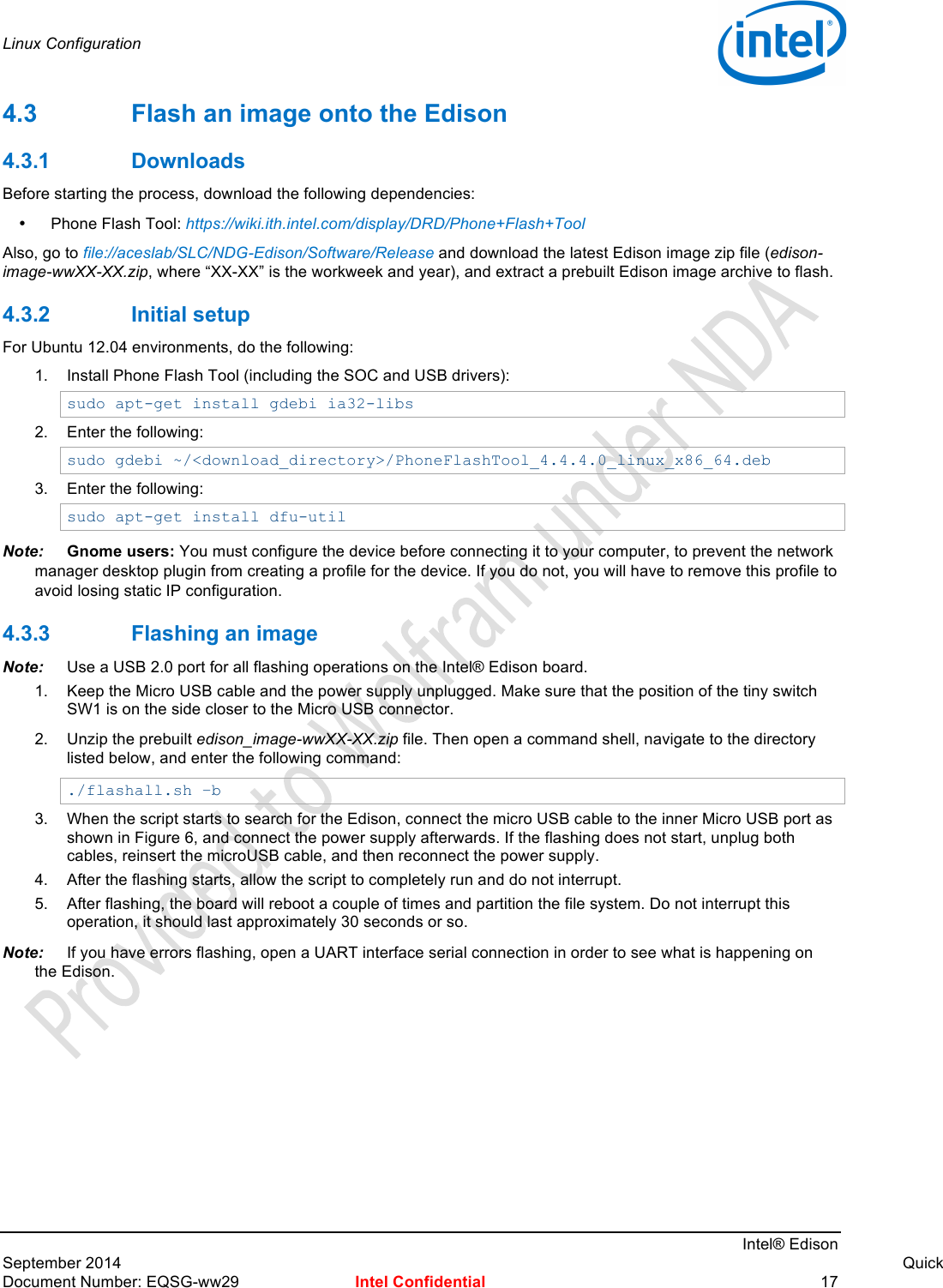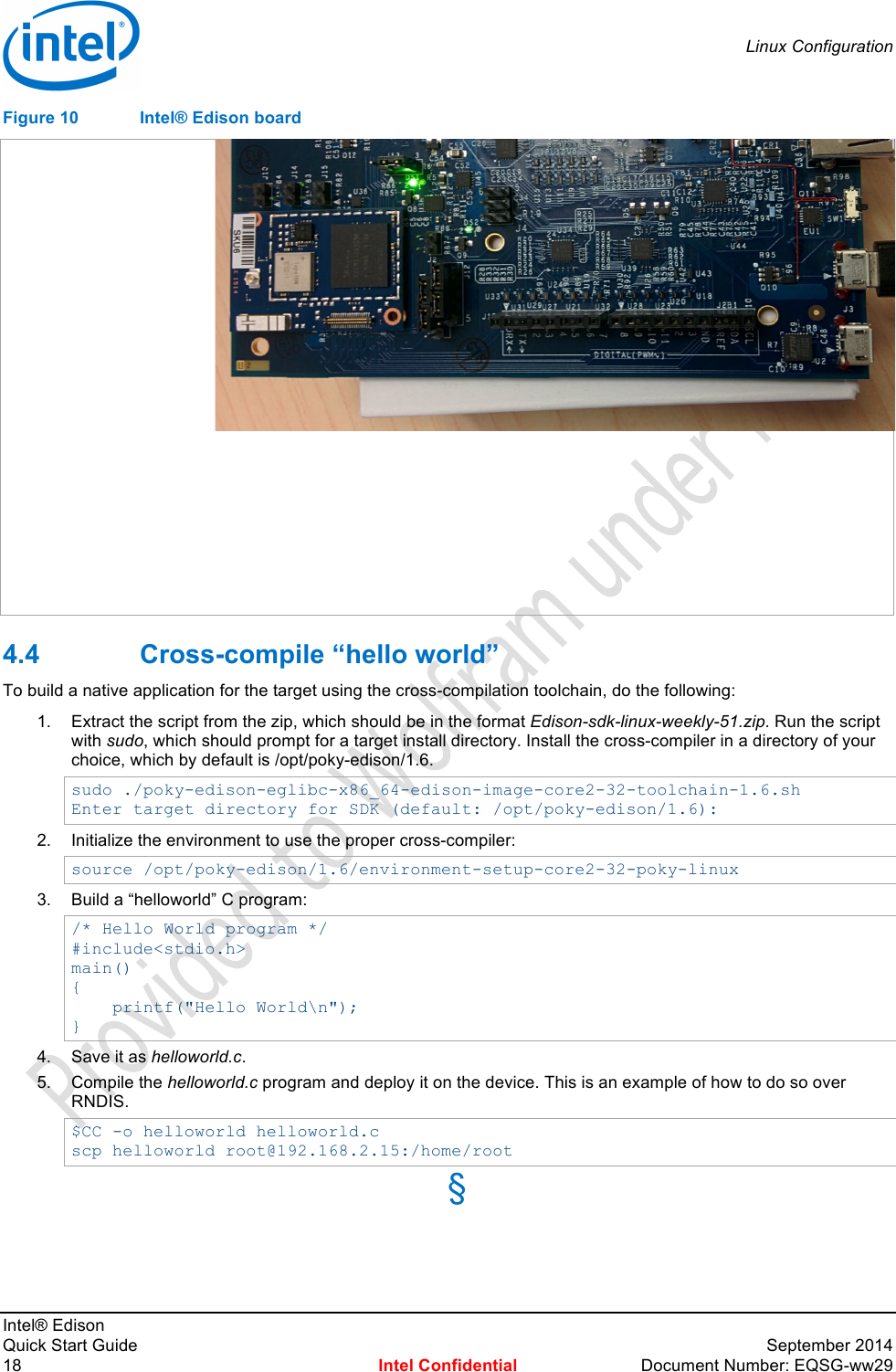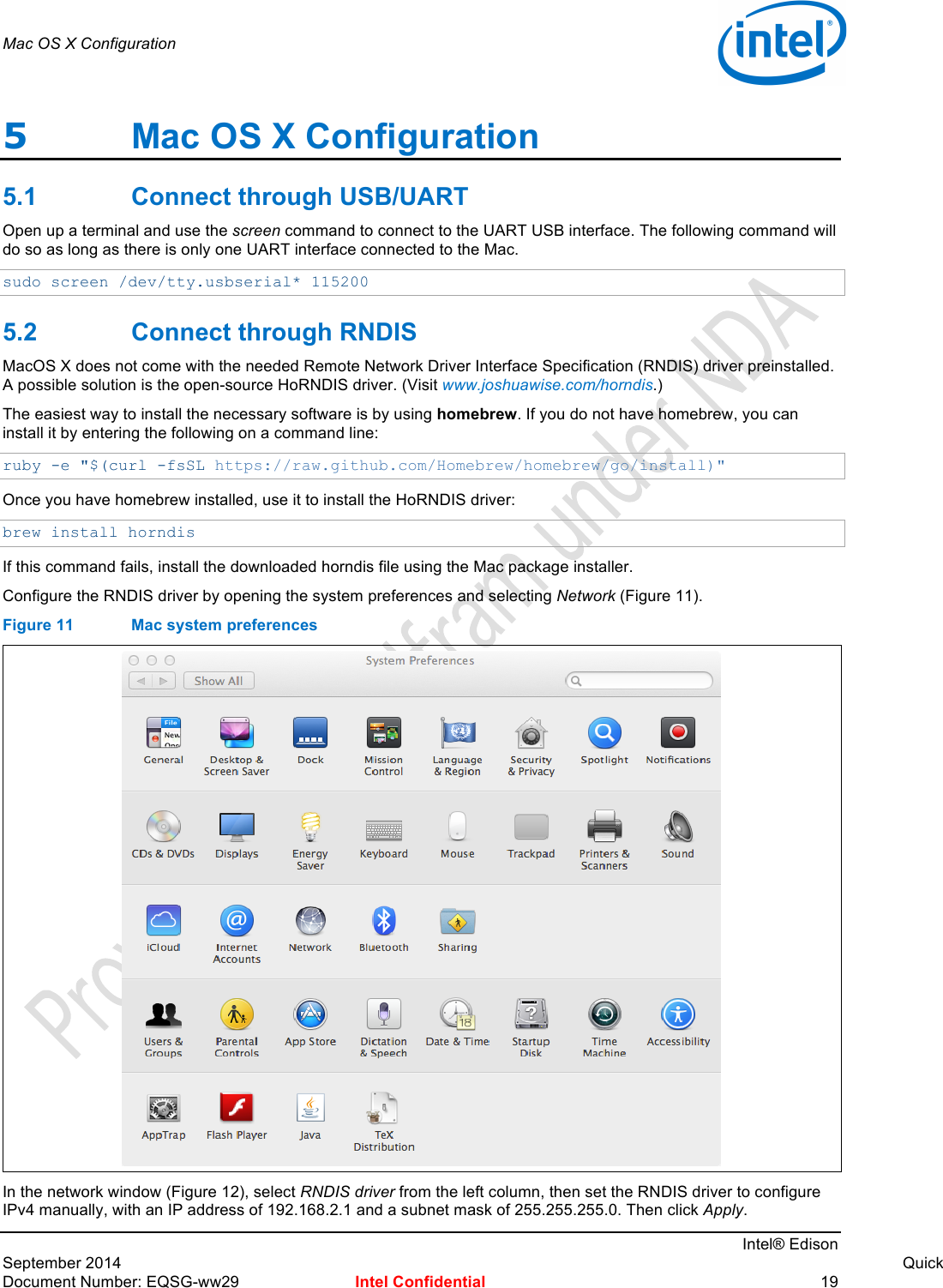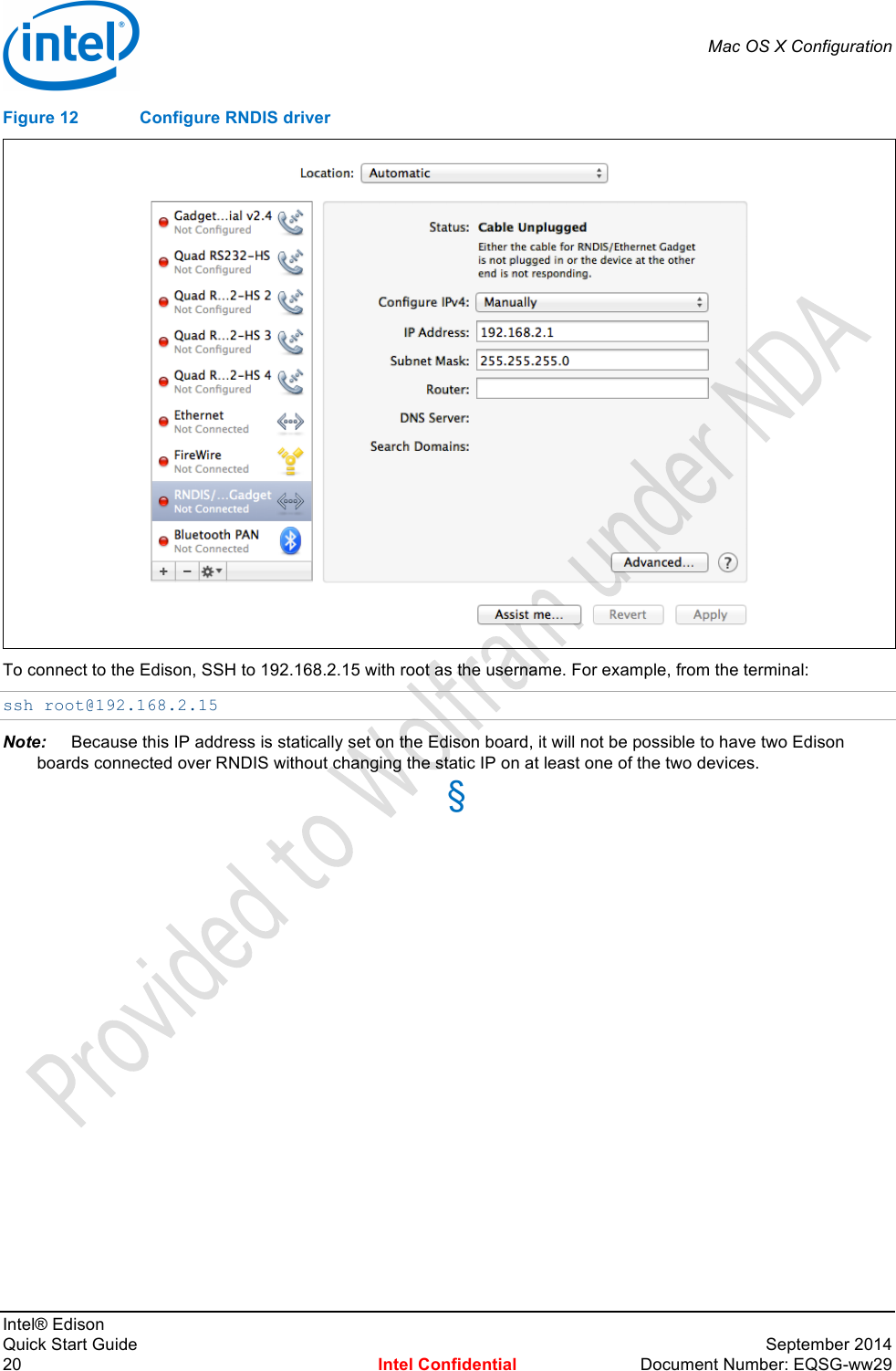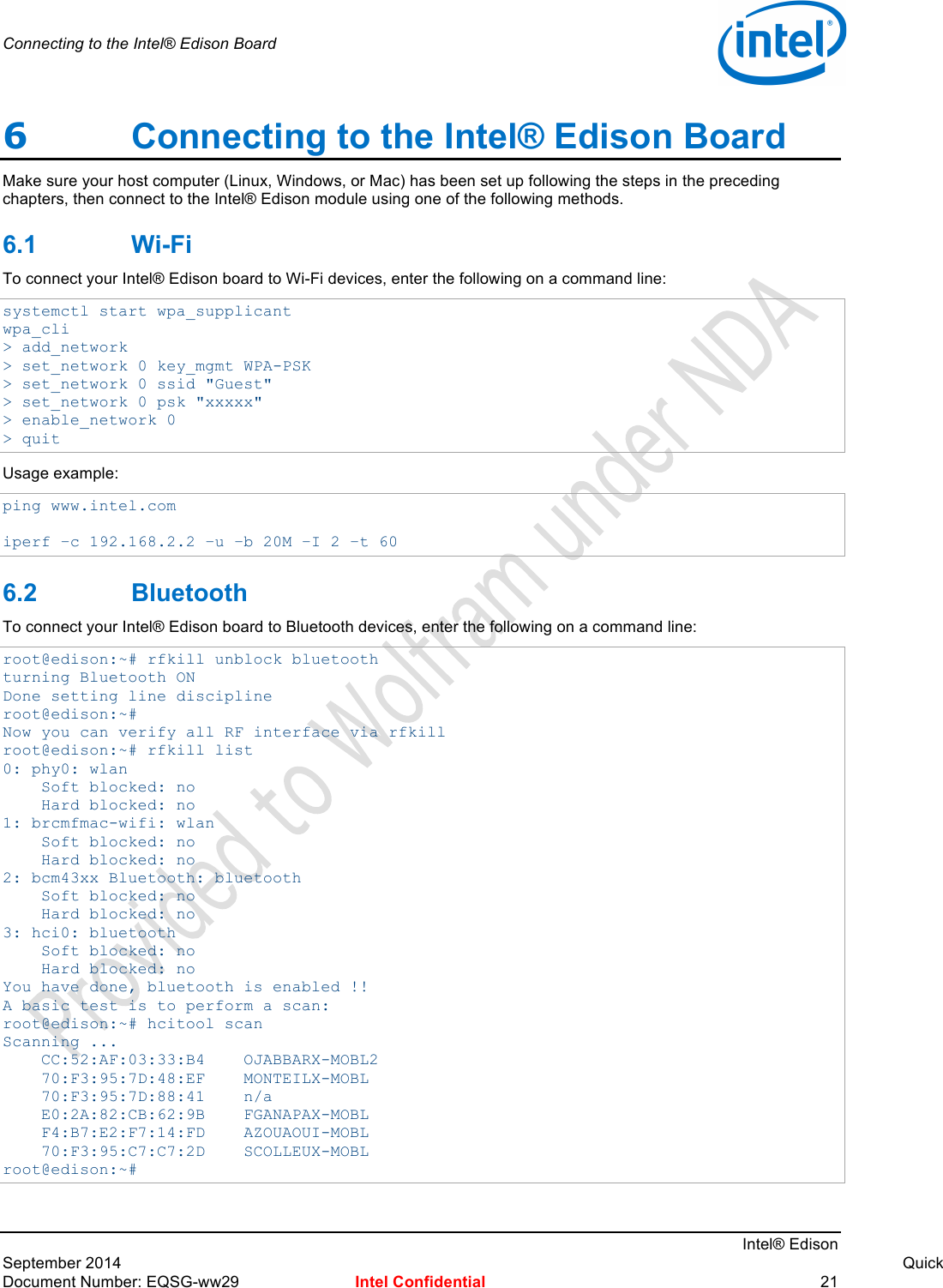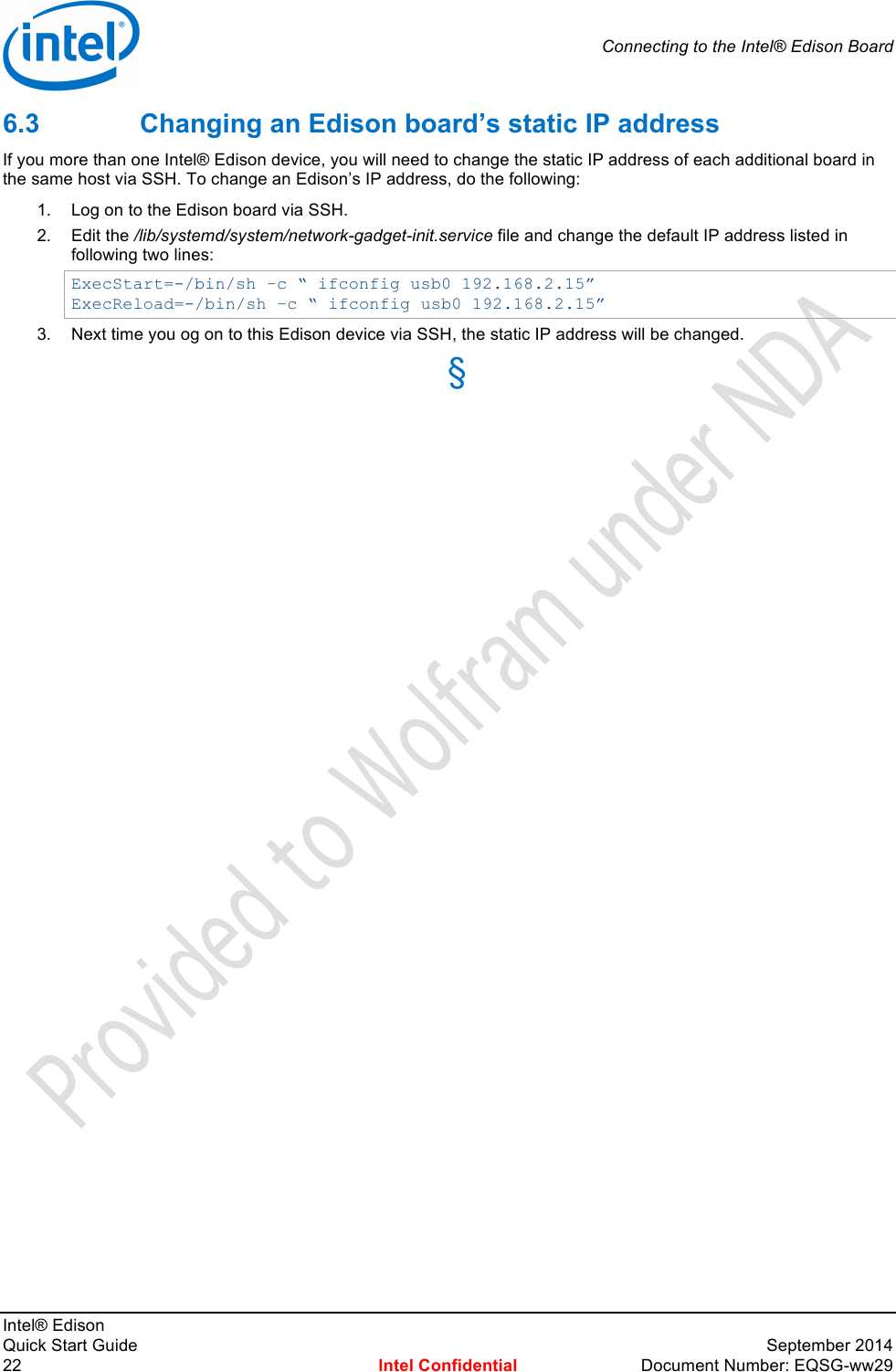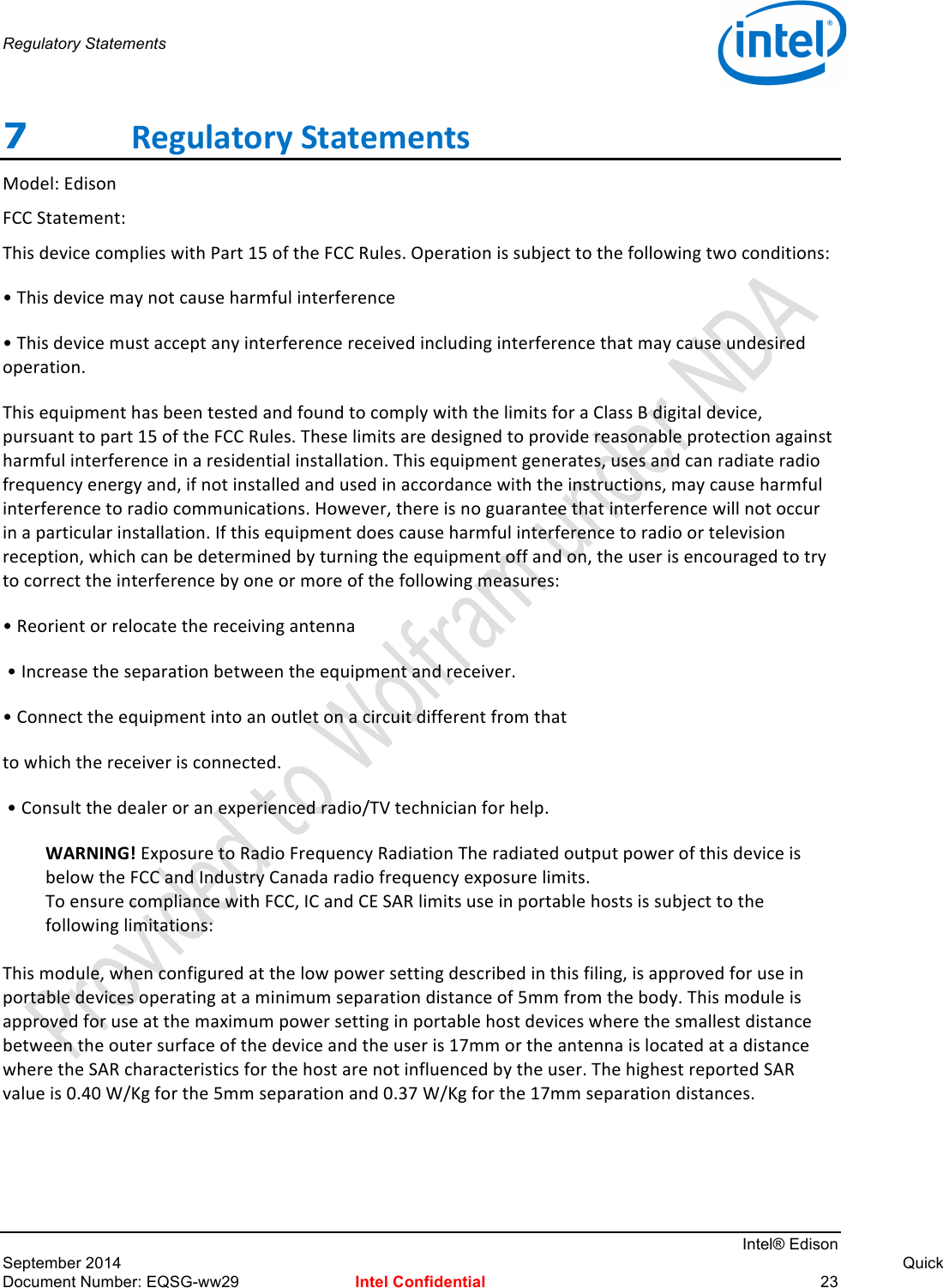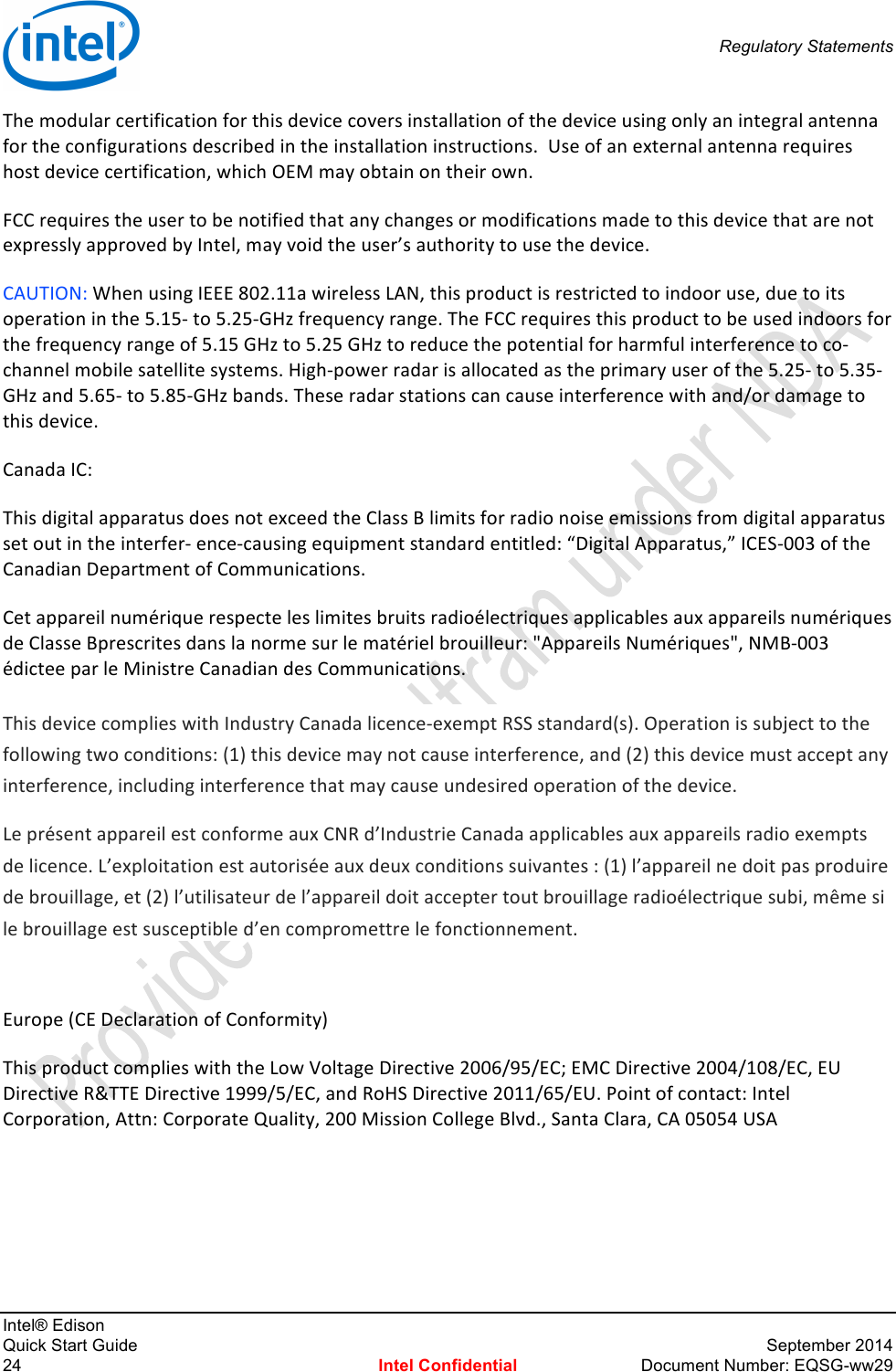Intel ND1 802.11 a/b/g/n, BLE and BT Module User Manual User Guide2x
Intel Corporation 802.11 a/b/g/n, BLE and BT Module User Guide2x
Intel >
Contents
- 1. Regulatory flyer
- 2. Regulatory Flyer
- 3. Installation Manual Revised
Installation Manual Revised
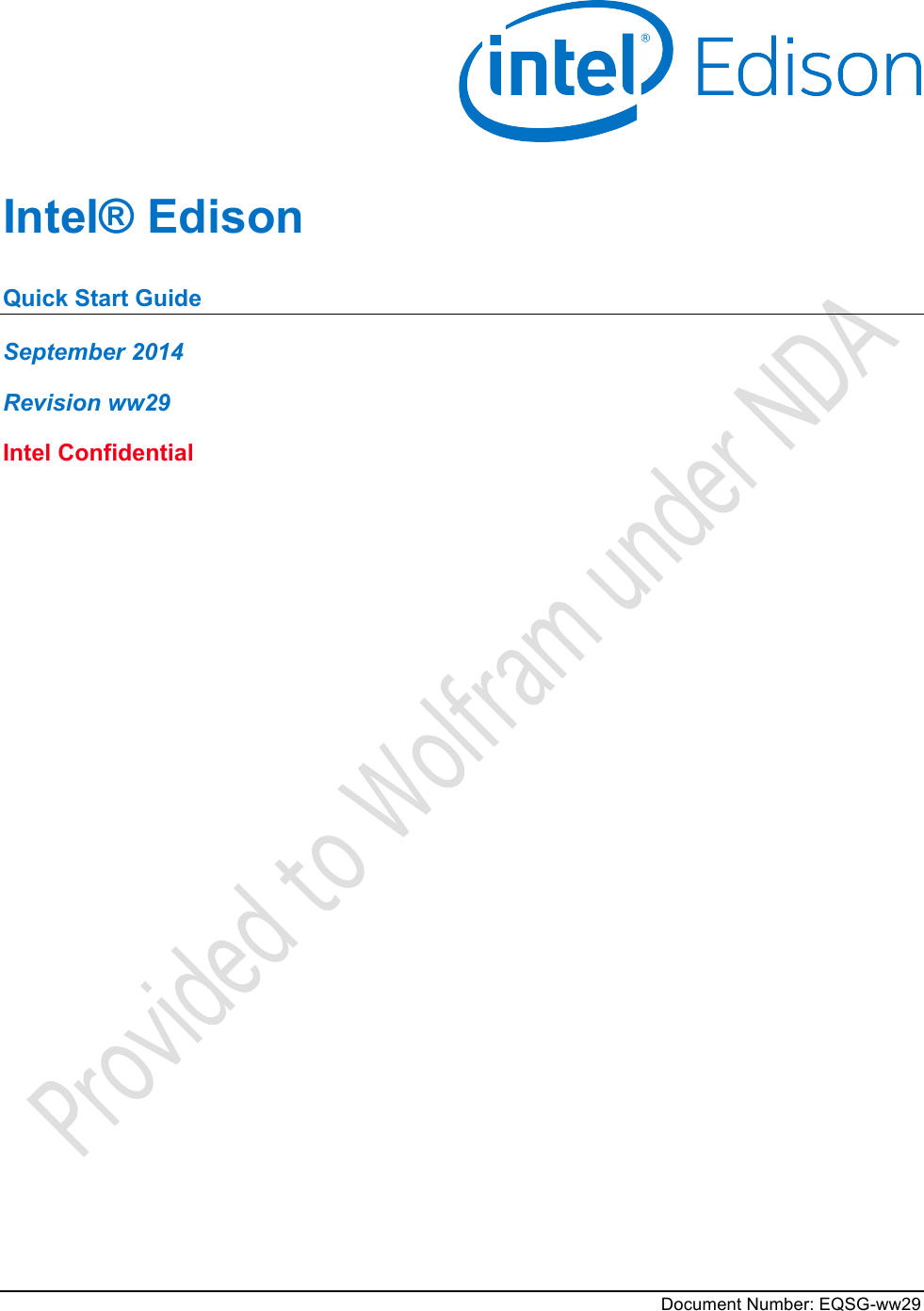
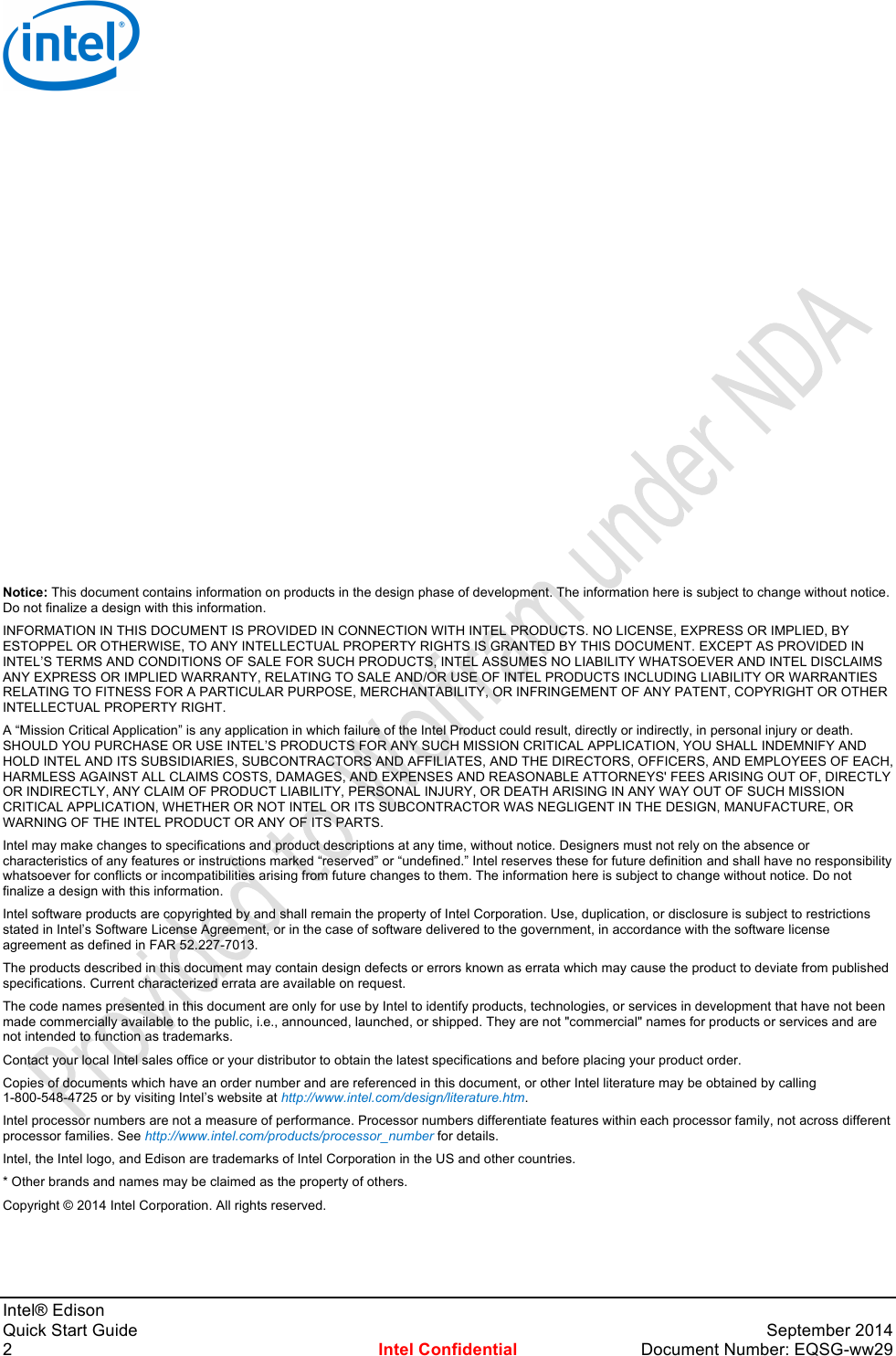
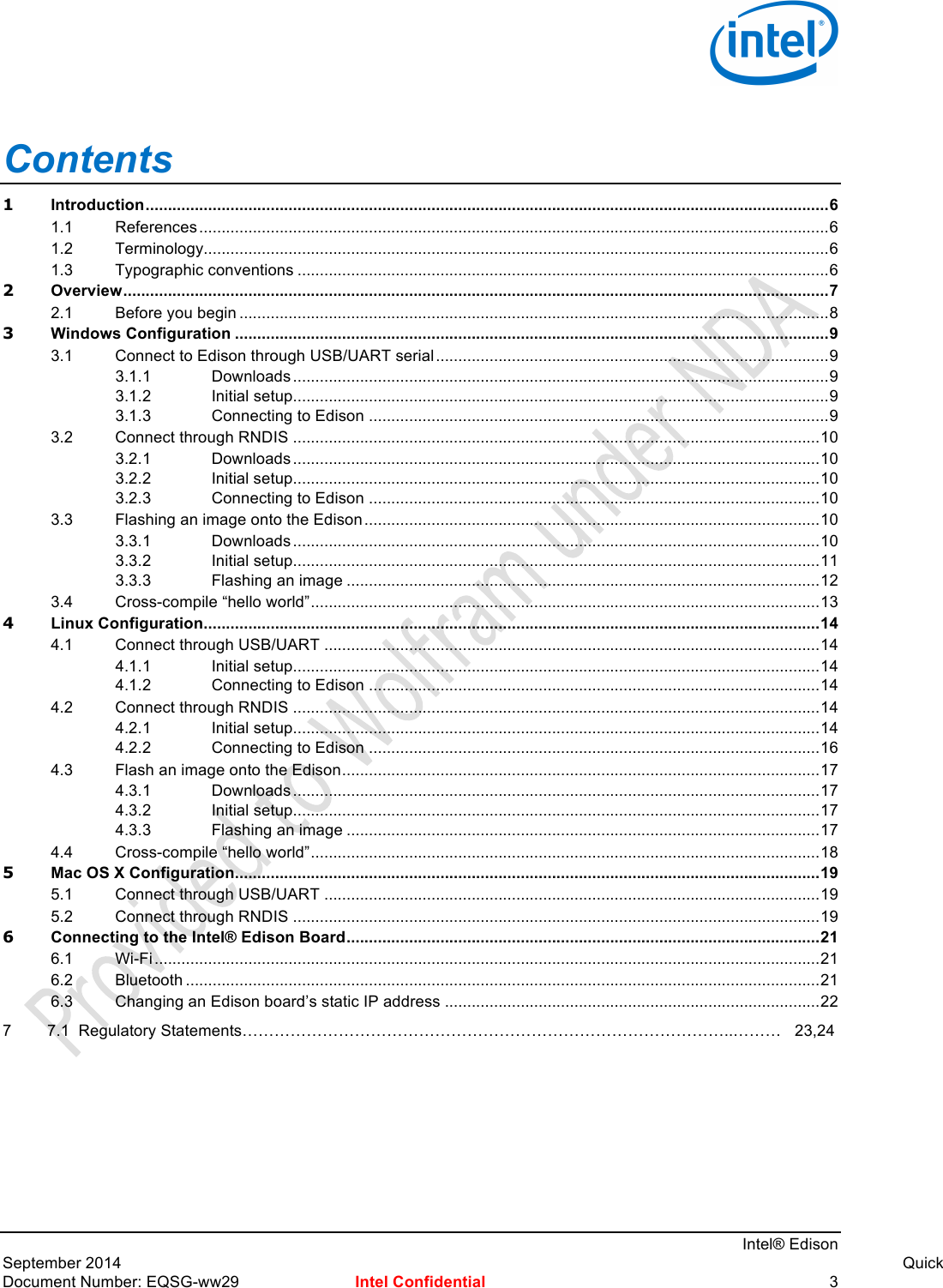
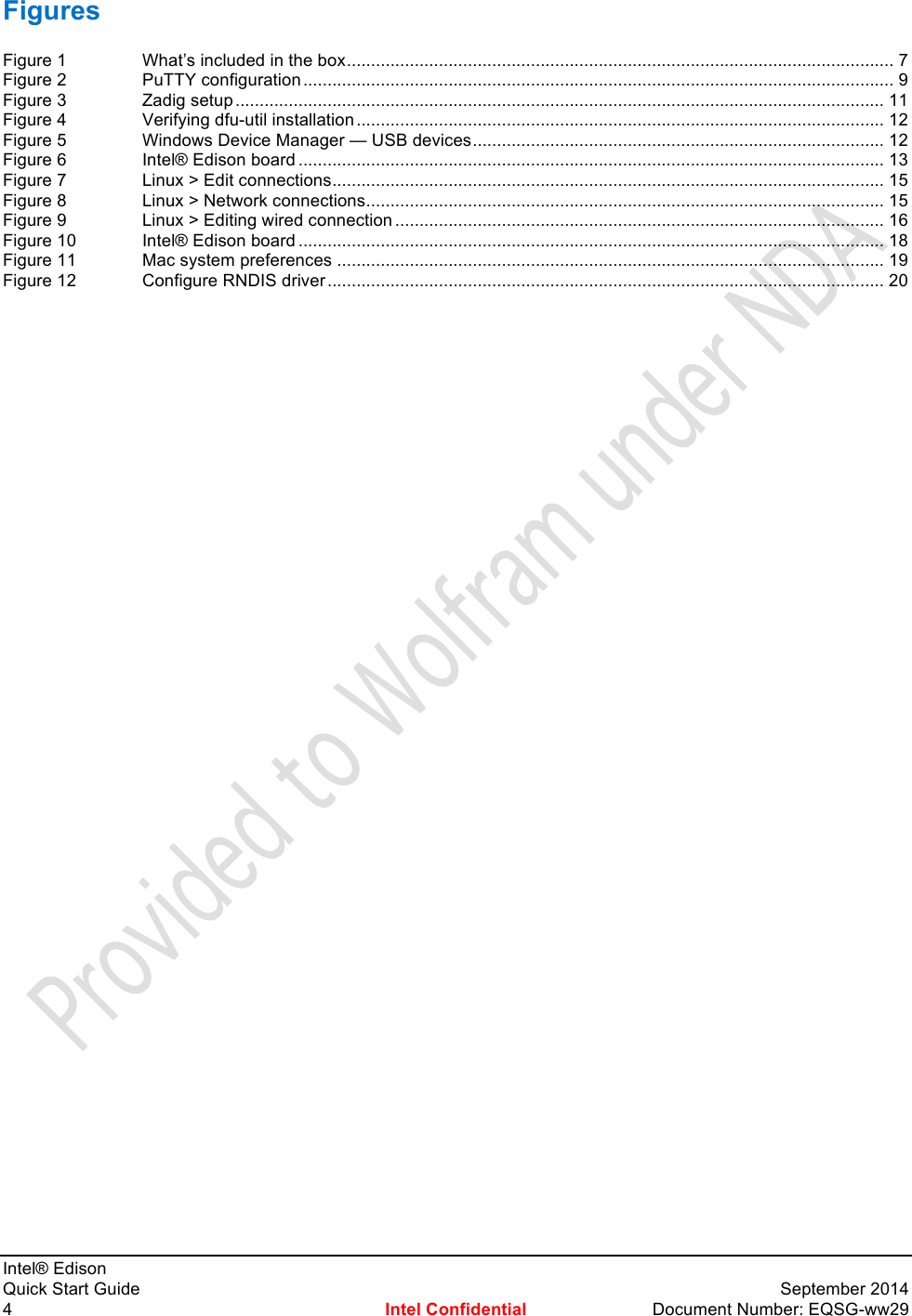
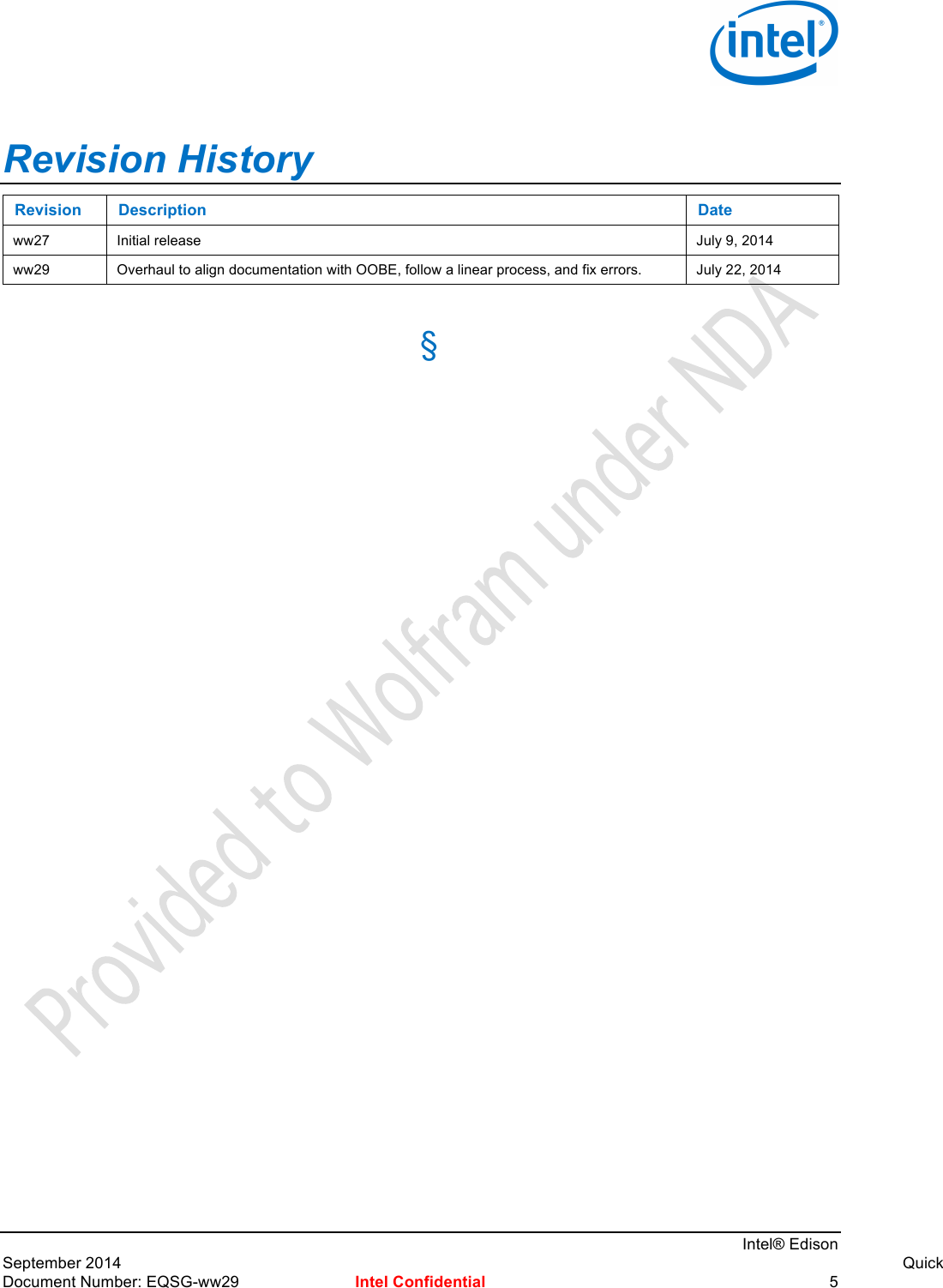
![Introduction Intel® Edison Quick Start Guide September 2014 6 Intel Confidential Document Number: EQSG-ww29 1 Introduction This document provides the necessary steps to install the Intel® Edison software and make the initial configurations in the supported environments. 1.1 References Reference Name Number/location [QSG] Intel® Edison Quick Start Guide (This document) [UG] Intel® Edison Board Support Package User Guide [RN] Intel® Edison Board Support Package Release Notes [HDG] Intel® Edison Hardware Design Guide [GSG] Intel® Edison Getting Started Guide [SDG] Intel® Edison Software Developer Guide [YPQSG] Yocto Project Quick Start Guide http://www.yoctoproject.org/docs/current/yocto-project-qs/yocto-project-qs.html [YDM] Yocto Developer Manual http://www.yoctoproject.org/docs/current/dev-manual/dev-manual.html [YKDM] Yocto Kernel Developer Manual http://www.yoctoproject.org/docs/latest/kernel-dev/kernel-dev.html 1.2 Terminology Term Definition SSH Secure shell host RNDIS Remote Network Driver Interface Specification (Microsoft Proprietary protocol used on top of USB) UART Universal Asynchronous Receiver/Transmitter SCP Secure Copy Command SFTP Secure File Transfer Protocol USB CDC Universal Serial Bus Communication Device Class 1.3 Typographic conventions The following conventions are used in this document: • Emphasis - graphical user interface entries and buttons, filenames, directory paths, etc. • Courier font - code examples, command line entries. Linux terminal inputs follow bold ## symbols and outputs follow a single # symbol as shown below. ##echo “a line sample of terminal input and output” #a line sample of terminal input and output §](https://usermanual.wiki/Intel/ND1.Installation-Manual-Revised/User-Guide-2397388-Page-6.png)
